The Grand Palace in Bangkok is one of Thailand’s most iconic historical landmarks, located in the heart of the city. Built in 1782, this grand complex served as the official residence of the Kings of Siam (now Thailand) for over 150 years. The Grand Palace symbolizes the monarchy’s power and serves as a spiritual center for the Thai people.
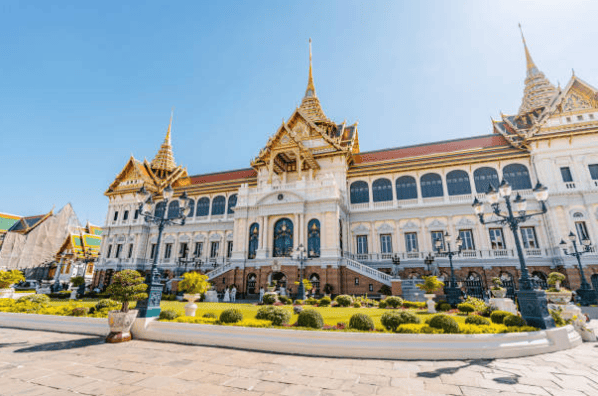
A Brief History
1. Foundation
The Grand Palace was constructed under the orders of King Rama I, founder of the Chakri Dynasty, when the capital was moved from Thonburi to Bangkok. It was designed to serve as the administrative center, royal residence, and a major temple.
2. Expansion
Initially, the complex consisted of only a few buildings, but subsequent monarchs expanded and renovated it. Over time, it grew to include royal halls, pavilions, and temples.
3. Role as the Royal Residence
The Grand Palace remained the official royal residence until the early 20th century when King Rama VI relocated the royal family to Dusit Palace. Despite this, the Grand Palace continues to host important royal ceremonies and state events.
Key Components of the Grand Palace
1. Wat Phra Kaew (Temple of the Emerald Buddha)
One of Thailand’s most sacred temples, Wat Phra Kaew houses the Emerald Buddha, a revered figure believed to bring fortune and protection to the nation.
2. Chakri Maha Prasat Throne Hall
This hall combines traditional Thai architecture with Renaissance-style elements, reflecting colonial influences during its construction.
3. Dusit Maha Prasat Hall
Used for royal funerals and other official ceremonies, this pavilion is a significant site within the complex.
4. Walls and Gates
The palace is surrounded by 1.9 kilometers of walls adorned with murals depicting the Ramakien Thailand’s version of the Indian epic Ramayana.
Cultural Significance
The Grand Palace is more than a symbol of royal authority; it is also a spiritual and cultural hub for the Thai people. It hosts essential traditional ceremonies, such as royal coronations and religious celebrations.
There’s no such thing as a “must-visit” in my travel dictionary. Even when a place is labeled as a “must-see destination,” I sometimes skip it if it doesn’t fit my schedule or budget. However, when it comes to Bangkok, Thailand, one place you really shouldn’t miss is the Grand Palace, the historic royal residence in the heart of the city.
I visited the Grand Palace during my first trip to Bangkok. Along with a friend from Italy, I took a bus to Phra Nakhon District. (For directions, you can check here.) On the bus, we were the only foreigners; everyone else was a local—dozens of them! The bus dropped us off near the Grand Palace, located by the Chao Phraya River. We walked to the main gate on Na Phra Lan Road. By the time we arrived, the sun was already setting, but the crowd of tourists waiting at the gate was overwhelming.
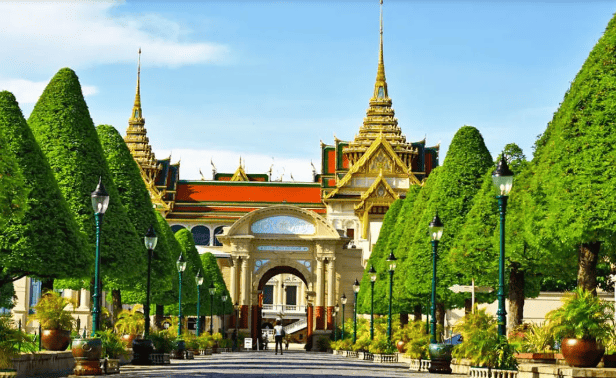
To enter the Grand Palace, you must wear modest clothing. This rule applies to both men and women. Since I showed up in a tank top and shorts, I had to rent long pants and a shirt with sleeves. Women can cover up with long skirts or wraps. There are plenty of clothing rental services near the gate, with vendors eagerly offering their outfits. The rental fee was 200 baht.
After covering my legs and shoulders, we proceeded to the entrance. Near the gate, there’s a ticket counter for Grand Palace admission. The tickets cost 500 baht, including access to the Vimanmek Palace in the Dusit district. My Italian friend stood in line for the tickets, then handed me the one for the Grand Palace and Wat Pho.
The entrance area was already packed with hundreds of tourists waiting for the next session. The Grand Palace is open daily from 8:30 AM to 3:30 PM, with visits scheduled in sessions. That afternoon, the entry opened at 2:00 PM Thailand time. Once the gates opened, the crowd moved slowly in one direction. After passing through the gate, visitors dispersed to explore different parts of the palace.
The Grand Palace is vast, spanning 500 by 300 meters, with 35 buildings inside. It was constructed in 1782 during the reign of King Rama I and served as the official residence of the Thai monarchs from the 18th century until 1945. Afterward, it was primarily used for royal ceremonies and rituals, as the king moved to Chitralada Palace.
Within the complex is Thailand’s most sacred temple, Wat Phra Kaew (Temple of the Emerald Buddha), the main attraction of the Grand Palace. Located in the Outer Court, it is one of three sections of the palace: the Outer Court, Middle Court, and Inner Court. There is also a Coin and Decoration Museum. The architecture in the Grand Palace blends traditional Thai designs with neo-Baroque styles, and the intricate decorations are mesmerizing.

Wat Phra Kaew is especially striking due to its dazzling golden color, which gleams under the sunlight. This temple serves as both the royal family’s private shrine and the kingdom’s ceremonial temple. Built in 1785, it houses statues and pagodas, but no monks reside there. Inside the temple, the main structure, Phra Ubosot, holds the Emerald Buddha. Surrounding it are other impressive structures such as the Phra Si Rattana Chedi, the Phra Mondop library, and a model of Angkor Wat.
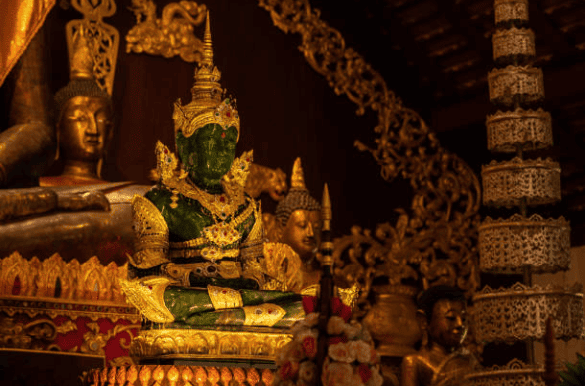
I entered the Phra Ubosot, where photography is prohibited, but I couldn’t resist sneaking a photo—only for it to turn out blurry! The decorations were incredibly detailed and stunning. Visitors must remove their shoes before entering. After exploring, I wandered through the golden pagodas and smaller shrines, marveling at their mystical aura and elaborate designs. Some walls featured murals depicting the history of the Grand Palace.
After exploring Wat Phra Kaew, we headed to Chakri Maha Prasat Hall, influenced by Italian Renaissance architecture. Located in the Middle Court, this building served as the king’s residence and a venue for state events. Only two rooms are open to the public, but the exterior architecture is equally captivating.
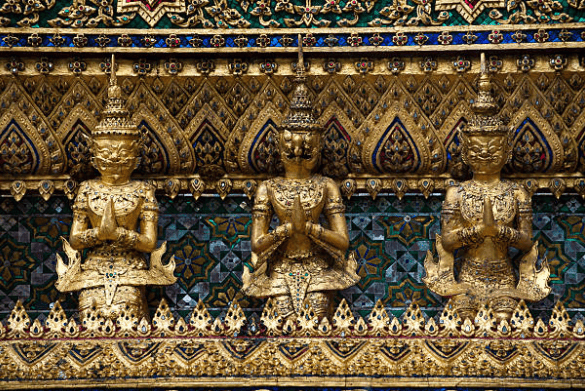
Finally, we left the Grand Palace to visit Wat Pho, which is just a short walk away. To reach it, follow the white wall of the palace and turn left. Along the way, vendors sell cold drinks and fresh fruit to help you cool off in the heat.
At Wat Pho, you’ll need to remove your shoes at the entrance, where plastic bags are provided for carrying them. Like the Grand Palace, visitors must wear modest clothing. Staff at the gate provide wraps for those in shorts or short skirts.
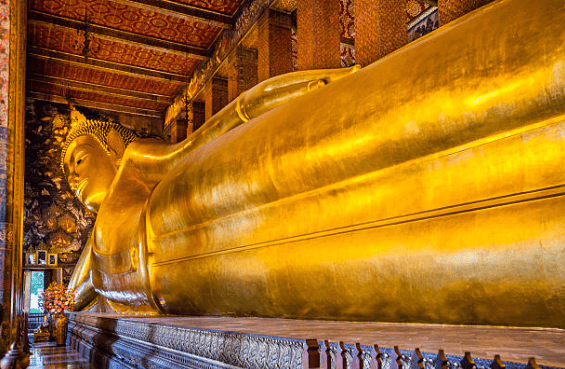
Wat Pho is famous for its Reclining Buddha, also known as the Sleeping Buddha. The statue is 46 meters long, covered in gold, with its eyes and feet adorned with mother-of-pearl. The intricate decorations on the ceilings, walls, and columns add to its charm. Wat Pho is open daily from 8:00 AM to 5:00 PM.
After admiring the Reclining Buddha, we returned to our hotel, exhausted but satisfied. I skipped dinner and fell asleep immediately.

Thanks for sharing. I read many of your blog posts, cool, your blog is very good.